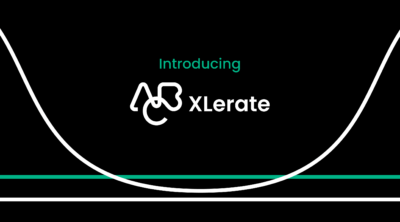In today’s social media-obsessed world, crafting the perfect sales email can often fall to the bottom of a marketing priorities list. And while it’s true that email has been around forever, that doesn’t make it any less important when it comes to sales.
Social media arguably has its advantages and it can complement the email strategy for your fitness business. Although that doesn’t mean you should pour all of your efforts into social, one approach alone can’t sustain long-term growth.
Email is effective, reliable, and worth investing in. But firing out a generic sales email is one thing; sending a carefully scripted message that inspires people to click, open, and take action is a whole different ball game.
In this article, we’ll highlight what you need to write a follow-up sales email that will turn prospects into members. Skip ahead to:
- Why You Need a Sales Follow-Up Email
- 5 Steps to Consider for Your Follow-Up Sales Email
- 1. Segmenting Your Email Database
- 2. The Subject Line
- 3. The Opening Sentence
- 4. The Email Copy
- 5. The Call-To-Action
Why You Need a Sales Follow-Up Email
A strong sales follow-up email forms a crucial part of your sales email strategy. You’ve given a sales prospect a tour of your studio, shown off your equipment, and introduced them to some of your world-class instructors. That doesn’t mean you can sit and wait for them to come back in and sign up. You need to be proactive, and it all begins with a friendly follow-up email.
There’s no need to send it a day later, as this can seem pushy, but be sure to send your email within a week of their studio tour.
5 Steps to Consider for Your Follow-Up Sales Email
For this article, we’ll be demonstrating a strong sales follow-up process that’s applicable after a sales prospect has visited your studio for the first time. Let’s dive in.
1. Segmenting Your Email Database
First things first, you want to know who your sales email is going to. Segmenting your database into specific groups means you can target people based on where they are in your sales pipeline.
If someone new walks into your gym, having never been in before, do you jump in and start talking to them about your excellent referral program? Or do you have a conversation, find out what they want from a gym membership, and tailor your sales pitch to meet their needs?
The same applies to a sales email. You don’t want to send out the same blanket email to every address you have. The one thing that should remain the same, wherever the reader is in your sales funnel, is that a sales email should be incentivizing. It could be a direct discount, or a subtle invitation to try out a new class. You need a reason for people to act.
2. The Subject Line
Your subject line is the hook of your email. People get hundreds of messages in their inbox every day, so if your subject line isn’t engaging from the get-go, your email will go straight to the trash. Let’s take a look at the best practice for crafting a great subject line.
Test Your Subject Line
As you grow your email database, it’s good practice to A/B test your subject lines. To do this, you’ll need to choose one of your audience segments and split them in half. These people are at the same stage in the sales process, so you can see which line will work best on them.
Subject line A: “First-timers save 10% on HIIT this Wednesday.”
Subject line B: “A first-class offer, just for you.”
The above are just basic examples, but maybe an explicit offer in the subject gets the most opens, or perhaps people will prefer something a little more personalized and subtle. There’s only one way to find out!
Don’t Be Generic
Naturally, all aspects of your email vary depending on which segment you are targeting. But it’s the segmentation that enables you to personalize the content. Keep it short and snappy – remember that your goal is to entice interest, not to sound like a sleazy salesman.
According to Hubspot research, there is a selection of red flag words to avoid using in your sales email subject. Some of these include:
- Final
- Unique
- Reminder
- Solution
- Sale
- Complimentary
- Tempting
When you look at these words, two key aspects stand out; they’re ‘salesy’ and generic, which is not a winning combination for an email that you actually want people to open.
Again, for the purpose of this article – someone has recently been into your studio, just to have a look around, for the first time. Here’s an example of a follow-up subject line that will likely be ignored:
Subject line: Tempting offer inside…
Someone has taken the time to come to your studio and have a conversation with you. You’ve gauged what they want from your studio, you know their pain points, and this subject line is the best you can do?
There’s nothing personal in this example and no detail. It’s a missed opportunity. Yes, there’s an “offer inside” but for someone to take advantage of it, they’d have to open the email.
With email marketing tools, you can automate reader personalization in the subject of your email. Take a look at this simple example:
Subject line: Great to meet you, Sam!
Think about your own inbox; you’re scrolling through the sea of generic subject lines from various brands trying you sell you a product or service. One by one, you select them for the trash, and then something catches your eye: your name.
It’s grabbed your attention for a moment longer than the rest of the junk in your inbox, so in a split-second decision, you’ve tapped and opened it up.
3. The Opening Sentance
Once they’ve opened your email, you want your email copy to get straight to the point. In this initial email, you want to come across as accessible and keen to help the reader, not desperate for a sale.
Subject line: Great to meet you, Sam!
Opener:
Thanks for coming into the studio this week, it was great getting to know a bit about you and your training goals. If you have any questions about membership options or would like to know more about our classes, feel free to reach out.
4. The Email Copy
While you can write basic email templates that you follow for each stage of the sales process, you still need to leave room for tailoring the content to the reader.
Make it Personal
Your first sales follow-up email is one of the most important; it’s where you start working on building a rapport with your sales prospect.
We know that personalization is key to creating an exceptional member experience – and this begins before someone is even your member. You’ve met this person. During any initial sales pitch, you should be doing more listening than selling, and after the prospect has left, you should summarize some quick notes on what you’ve learned about them.
Be Helpful
With the information you gain from listening to your sales prospect, you can then personalize your email content to be helpful and thoughtful. Be sure to add in some subtle links to help promote your studio’s personality.
We’ll expand on the example from our last section to highlight this point:
The Top 10 Barriers
Slowing Your Fitness
Business Growth
Discover more Subject line: Great to meet you, Sam!
Opener:
Thanks for coming into the studio this week, it was great getting to know a bit about you and your training goals. If you have any questions about membership options or would like to know more about our classes, feel free to reach out.
Body:
Just a thought; spinning could make a great addition to your marathon training. There’s a bike with your name on it this Thursday if you’re interested in trying a class!
Chrissie will be leading the session – her energy is contagious. You can check out some of her classes on our Instagram, and listen to her playlists on Spotify here to get a feel for the class.
5. The Call-To-Action
The subject line gets your email opened; the Email Copy builds a rapport and furthers the readers’ interest. But no sales email is complete without a clear CTA.
Have a Clear Goal
You need to know exactly what you want your prospect to do when crafting your email to drive them to the CTA.
In the example we’ve been illustrating, we’re inviting our prospect to open the email with a conversational subject line.
We’re then building a rapport with personalization because we remembered that they’re training for a marathon. Finally, we’re gently prompting the prospect to see how great our studio is with the links included in the Email Copy.
Keep Communication Open
Everything we’ve included naturally piques interest and engages the reader, because it’s personal to them, and builds up to our CTA: We want this prospect to book a class. From the friendly relationship we’re developing with this prospect already, getting them in for a trial class is likely to help seal the deal.
Again, this is just an example, and your first-follow up sales email doesn’t have to have the same goal.
But here’s the thing; sometimes a prospect won’t want to do what you want them to. In an ideal world, they open your email, and they follow through to your CTA. But if they don’t – you shouldn’t give up.
You’ve likely ignored a few email offers yourself, probably because the offer didn’t suit you. And when a few days later, you receive another follow-up email promoting the same offer, you ignored it again. But that time, it was annoying.
So we’re not talking about letting the prospect ignore you before sending another follow-up email.
The key is to ensure that your CTA is one option. It’s the one you want them to choose. But if they don’t, you need to create a situation that makes them open to staying in touch with you – not open to finding you annoying.
Subject line: Great to meet you, Sam!
Opener:
Thanks for coming into the studio this week, it was great getting to know a bit about you and your training goals. If you have any questions about membership options or would like to know more about our classes, feel free to reach out.
Body:
Just a thought; spinning could make a great addition to your marathon training. There’s a bike with your name on it this Thursday if you’re interested in trying a class!
Chrissie will be leading the session – her energy is contagious. You can check out some of her classes on our Instagram, and listen to her playlists on Spotify here to get a feel for the class.
CTA:
You can book your free spot by clicking here.
If Thursday doesn’t work, let me know and we can find a time that suits you.
Thanks
[Name, linked contact info, for easy access]
What we’ve done in our example is very simple: Our ideal CTA is that our prospect books their free class. We specifically chose a date for them in the first place. This means communication is kept open because if they don’t act on our CTA, the ball’s in their court to arrange a time that suits.
Either way, we get them into class.
In Summary
A great email campaign can drive effective sales for your studio. From your click-through rates to your physical show-up rate, you’ll be able to identify what works best for your business.
Finding the winning sales email formula that works for you and your sales reps requires experimenting. The templates that you’ll begin to create have to be carefully thought out, personalized, and tested.
Once you’re onto the sales email sequence that drives results for your studio, you can train sales reps with the templates and illustrate what works, what doesn’t, and why.















